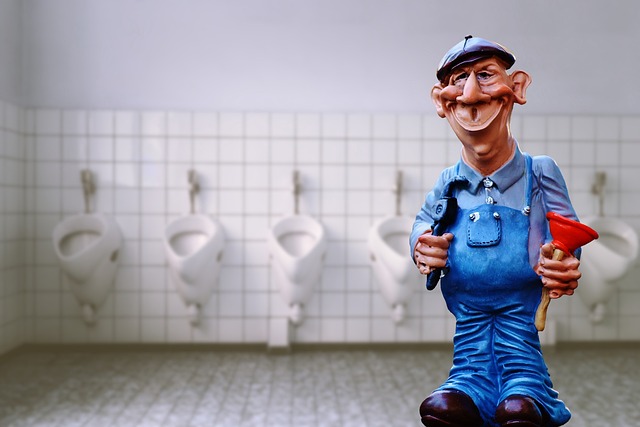Common garbage disposal issues arise from everyday use, foreign objects, worn blades, leaks, or power failures. Plumbers diagnose and fix these problems quickly. Regular maintenance, including cleaning and grease removal, prevents blockages and ensures smooth operation for years. To save money and avoid costly plumber visits, follow recommended care tips: turn off power at the circuit breaker, remove the unit, inspect for damage, clear food debris, and address issues. Plumbers advise on monthly cleaning with hot water and vinegar, lemon slices for buildup, avoiding coffee grounds, grease, bones, and large chunks, using cold water and a garbage disposal mat, and regular leak checks.
Need your garbage disposal fixing fast? This guide is your go-to resource. From understanding common issues like clogs and grinding sounds to mastering a step-by-step repair process, we’ve got you covered. Learn how to identify problem causes, disassemble and clean your unit, and prevent future blockages with easy maintenance tips. Don’t let a faulty disposal clog up your day—empower yourself with these expert plumber-approved solutions.
- Understanding Garbage Disposal Issues and Common Causes
- Step-by-Step Guide to Repairing Your Garbage Disposal
- Maintenance Tips to Prevent Future Blockages and Repairs
Understanding Garbage Disposal Issues and Common Causes

Many garbage disposal issues arise from everyday usage, with common causes including foreign objects like bones, fruit pits, or metal, which can jam the mechanism and cause grinding noises. Over time, the blades may wear down, leading to a lack of efficient food shredding and potential clogs. Leaks could signal damaged gaskets or seals, while a disposal that won’t turn on might be due to tripped circuits or faulty wiring.
A skilled plumber can quickly diagnose these problems by checking for power supply issues, inspecting for blockages, and assessing the condition of the internal components. Regular maintenance, including cleaning and grease removal, is key in preventing such issues, ensuring your garbage disposal operates smoothly for years to come.
Step-by-Step Guide to Repairing Your Garbage Disposal

Repairing your garbage disposal can save you money and prevent costly plumber visits. Here’s a step-by-step guide to help you get back to smooth operation:
1. Safety First: Turn off the power to your garbage disposal at the circuit breaker before beginning any repair work. Use a wrench to loosen and remove the mounting screws from beneath the sink, carefully lifting the disposal out for inspection. Look for any damaged blades or parts that might be causing the issue. Cleaning any built-up food debris is also crucial as a blocked unit can cause significant strain on your motor.
Maintenance Tips to Prevent Future Blockages and Repairs

Regular maintenance is key to preventing future blockages and costly repairs. A plumber recommends cleaning the garbage disposal once a month with hot water and vinegar or lemon juice, as these natural acids help break down food particles. Additionally, freezing lemon slices and dropping them into the disposal can act as an ice pick, clearing out any buildup.
Avoid feeding the disposal items like coffee grounds, grease, bones, or large food chunks, as they can quickly clog the system. Always use cold water while running the disposal and consider using a garbage disposal mat to catch larger debris before it enters the unit. Regularly checking for leaks and addressing them promptly is also crucial in maintaining a smooth-operating garbage disposal.
Restoring your garbage disposal to optimal condition is not only cost-effective but also prevents potential plumbing emergencies. By understanding common issues, following a comprehensive repair guide, and implementing preventive maintenance tips, you can ensure smooth operation for years to come. Remember, a well-maintained garbage disposal saves time, money, and frustration – all while keeping your kitchen running smoothly. Consider these steps as your go-to reference the next time your disposal acts up, and turn to a professional plumber if needed.
